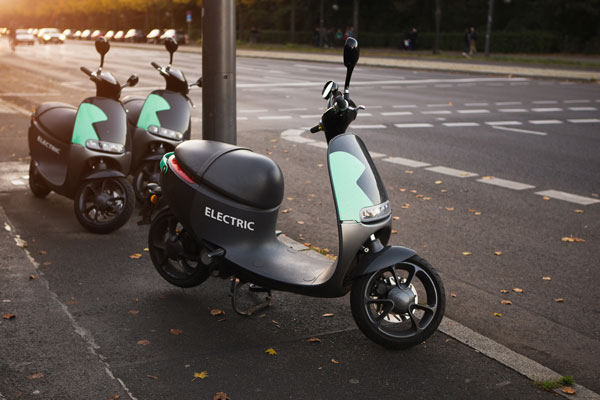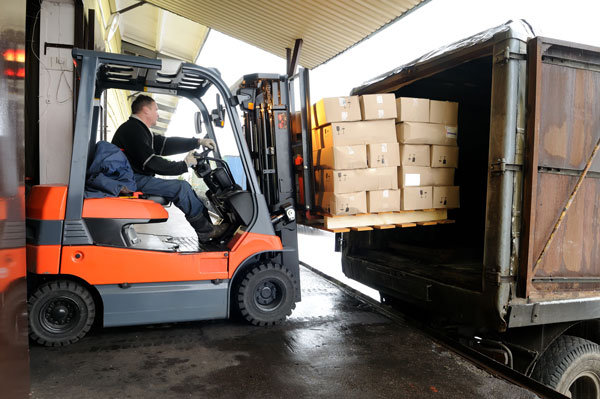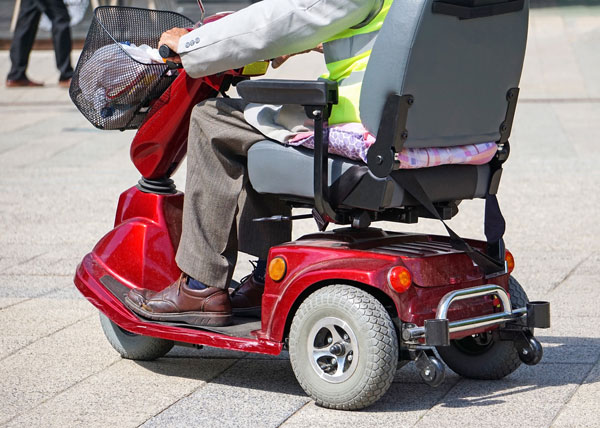Overview
Although most of the media attention regarding electrification of transportation focuses on the huge growth in the Electric Vehicle (EV) market, another segment that will have a major impact is the proliferation of smaller personalized E-Mobility systems. These vehicles include a variety of applications, such as electric scooters, wheelchairs, motorbikes, golf carts, small shuttle vehicles, forklifts, platform carts, autonomous warehouse mobile robots, and more.
One commonality among these E-Mobility applications is the need for smaller, compact battery systems to power their lower voltage propulsion drive mechanisms. As discussed in this paper, the battery systems in these personal mobility vehicles need to minimize size and weight as well as using lower voltages to enhance safety.
Key Trends in Personal E-Mobility
As the overall transportation landscape moves away from fossil fuels, full-size EVs, trucks and public transportation systems are radically changing the choices available for traveling mid to long distances both within and between urban areas.However, in parallel the diverse applications for smaller E-Mobility solutions are also rapidly growing, both for personalized consumer applications within urban areas and for specialized commercial situations in warehouses, factories, and campus settings.
This E-Mobility market is actually made up of many different market segments, all of which are experiencing accelerated growth. Just a few examples are below:
- The Global Electric Scooter and Motorcycle Market Size was estimated to reach USD 1,140 thousand units in 2021 and is projected to grow at a CAGR of 32.5% during the forecast period, according to a detailed market study by Quince Market Insights.
- The electric golf cart market was valued at USD 1.86 billion in 2020, and it is expected to reach USD 2.52 billion by 2026, with a CAGR of about 5% during the forecast period (2021-2026) – Mordor Intelligence.
- The global electric forklift market is projected to expand at a CAGR of 7.1% and is anticipated to reach USD 39.4 billion by 2030 according to a study by Goldstein Market Intelligence.



Technology Challenges and Solutions
Most personal E-Mobility devices use brushless DC electric motors with permanent magnets attached to the moving hub that turns around a fixed armature. This offers high efficiency, good speed-torque characteristics, and low weight. In some cases, the DC motor is built directly into the wheel(s), thereby eliminating gears and drive belts and simplifying the overall designs. However, the limited space, small vehicle size and tight integration of DC motors poses a number of key technology challenges, including the following:
Battery Technology – Typically, smaller E-Mobility vehicles use low-voltage (48V) power as compared to the high-voltage EV powertrains that can range from 400 to 800V. This means the on-board battery systems can be inherently smaller, with fewer Lithium-Ion cells in each battery pack. However, the need to minimize overall space and weight requires innovative approaches to interconnecting all the cells, integrating efficient collector plates, and robustly packaging the battery systems for use in a wide range of environmental conditions.
Power Interconnects & Busbars – Interfacing battery packs to powertrains and power control modules also requires a robust set of proven interconnect and busbar technologies, that optimize performance and design flexibility to accommodate diverse E-Mobility applications. Some specific requirements can include integrating batteries, powertrains and wheels into self-contained assemblies to minimize space and avoid exposed wiring. For example, Innovative solutions such as ENNOVI’s BusMate® power couplers can streamline and simplify power connections between small PCBs, busbars, and motors.
Safety – Always a prime consideration in any vehicle, safety is key factor for successful design and deployment of personal E-Mobility systems. The use of low 48V power is a major safety element in itself but product engineers also must make sure that all systems are designed to minimize risk of shock to users or accidental damage to the system. Here again, the use of configurable, compact interconnect solutions and integrated molding can help with the tight integration needed to avoid exposing users to live wiring.
Summary
At ENNOVI, we have a long track record of working with global EV manufacturers to innovate and design leading edge solutions for virtually all types of vehicles, including full-size cars and trucks as well as smaller personal E-Mobility systems.
ENNOVI is a key player across this whole spectrum. In addition to providing solutions for high-voltage EV powertrains (400V to 800V), we also enable the low-voltage (48V) powertrains used in hybrids and personal E-Mobility systems.
For the diverse E-Mobility market, ENNOVI goes well beyond simply building one-off custom solutions for each project. We have developed a broad and deep technology base of power interconnects, busbars, motor stator solutions, integrated power inverter connectors, and the underlying materials science and design expertise to quickly adapt and configure new solutions for any size and type of electric vehicles.
